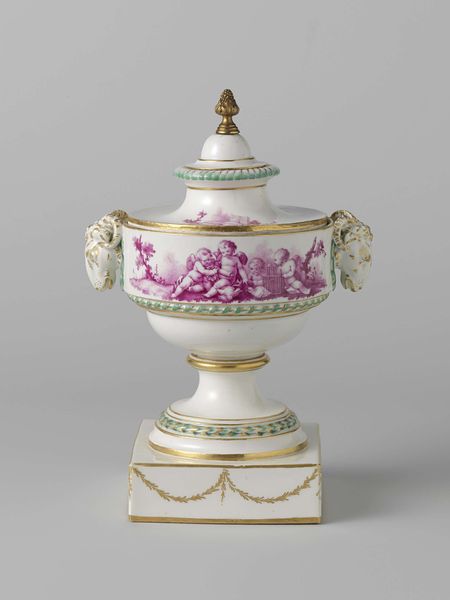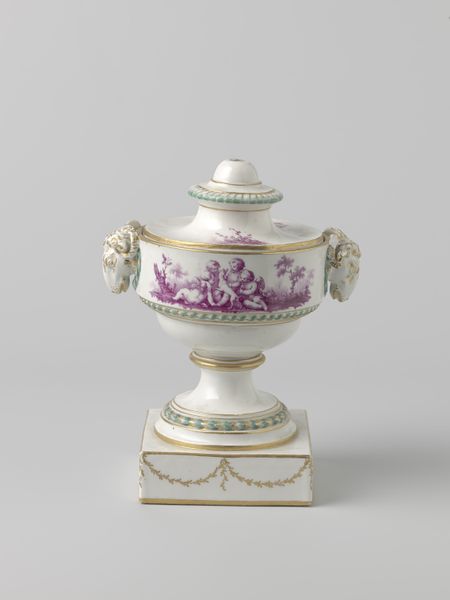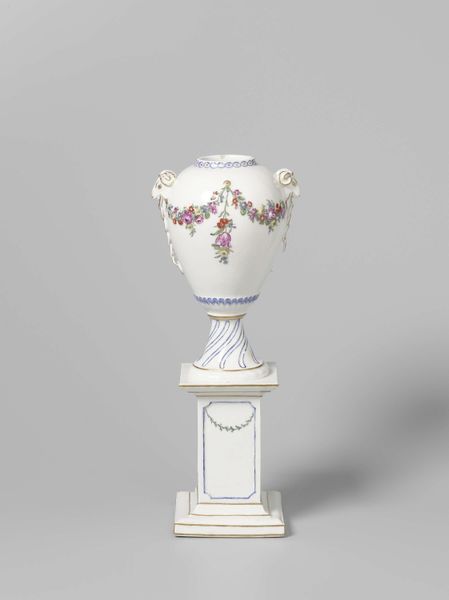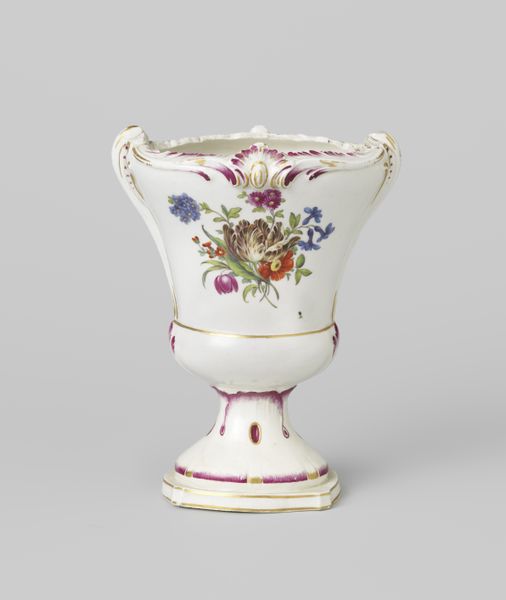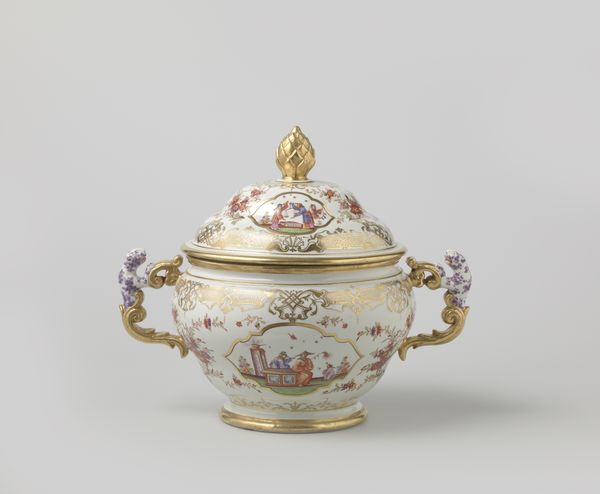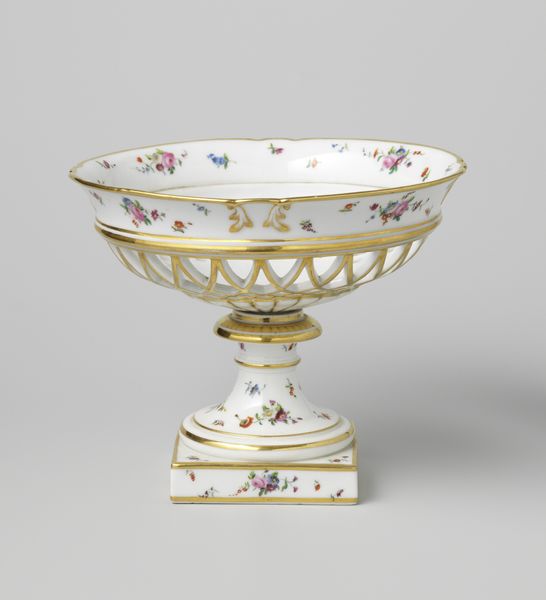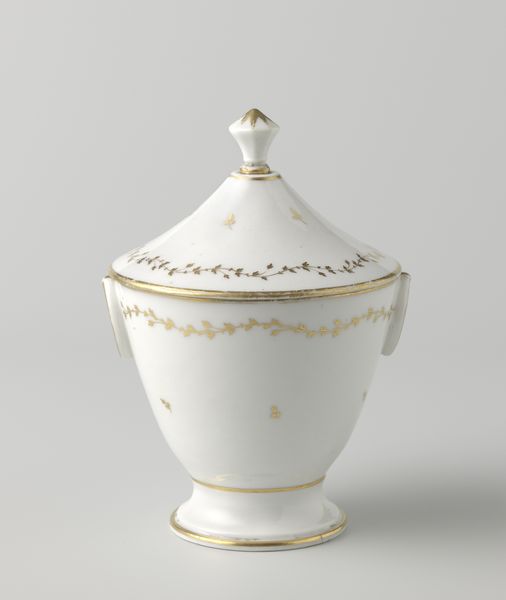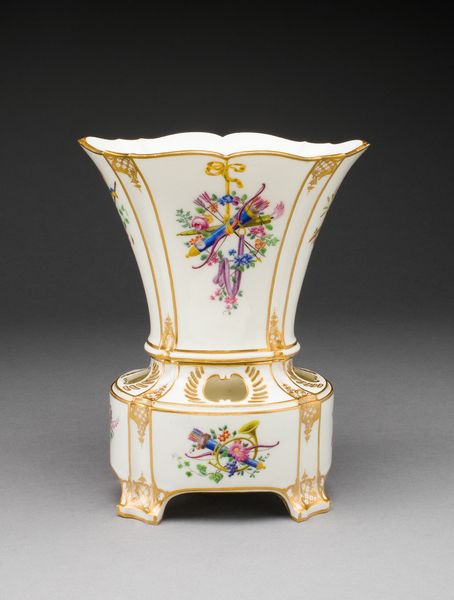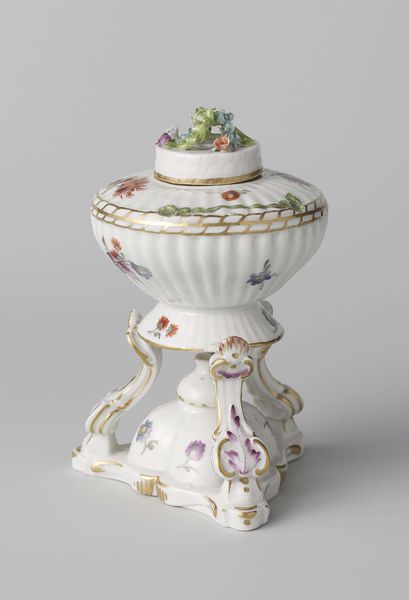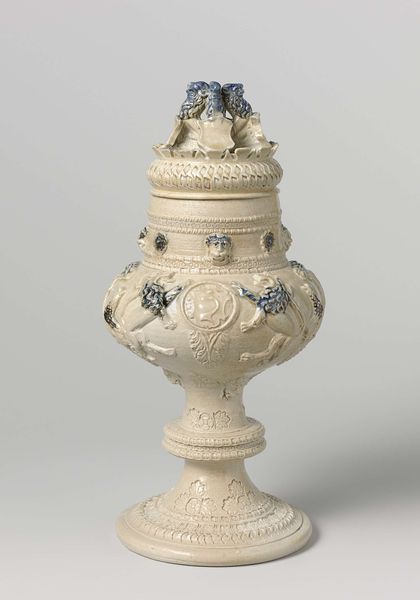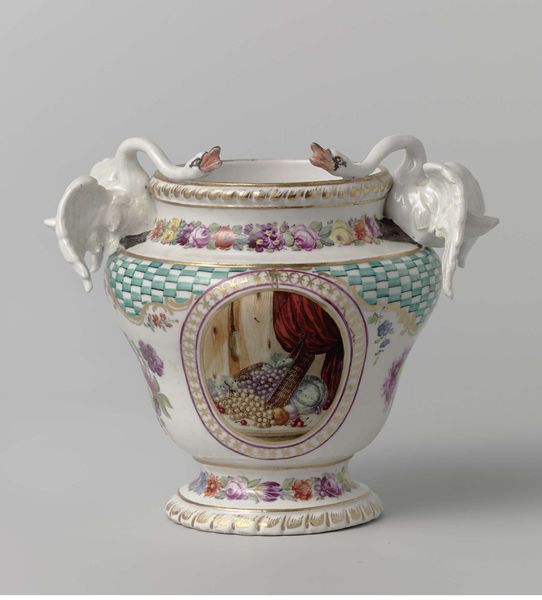
Dimensions: height 19.4 cm, width 9.7 cm, diameter 7.9 cm
Copyright: Rijks Museum: Open Domain
Curator: This exquisitely crafted porcelain vase, made by Loosdrecht around 1778-1782, is titled "Vaas, beschilderd met bloemguirlandes en leeuwenkoppen," or "Vase, painted with floral garlands and lion heads" and currently resides in the Rijksmuseum. Editor: The vase is delightful! I’m immediately struck by its compact symmetry and the contrasting details. The pristine white surface set against the pastel floral designs, and those slightly comical lion heads, makes the object seem playfully regal. Curator: Absolutely. The playful aspect speaks to the Rococo style which often emphasizes asymmetry and decorative elements, something which moved away from classic ideas of symmetry. But let's delve a little deeper. The production of porcelain during this period was a complex affair. Do we know who made the moulds for the porcelain and were they part of Loosdrecht or external makers. Moreover, pieces like this vase reflect the economic structures of the time: it signifies luxury and elite consumption. Editor: Good point! From a formal perspective, the arrangement of elements generates a satisfying harmony. The eye dances from the floral garlands, a delicate semiotic display, to the gilded lion heads and the geometric patterns, especially around the lid. I am captivated by the fluted form and linear design of the finial: what does this imply or reflect? Curator: It underscores the desire to replicate French high-end decorative trends while adapting it to their own labour constraints and social possibilities. Were they simply copying an aesthetic or incorporating new modes of production? Perhaps looking into who commissioned the piece might highlight the cultural dynamics behind such commissions? Editor: Thinking about pure visual structure: the color palette, primarily white and gold with those bursts of pastel, dictates the sense of preciousness, of decorous display. I’d suggest we examine more carefully what is revealed and concealed in those design choices: were the colours chosen intentionally, reflecting contemporary tastes, and even social stratification through design? Curator: Examining that contrast can take us even further in analyzing labour, modes of industrialization and distribution! Thank you for calling to my attention the ways that art becomes social through formal decisions. Editor: And thank you, as well, for drawing out from this form's features these cultural practices! It's so interesting to connect process and design.
Comments
No comments
Be the first to comment and join the conversation on the ultimate creative platform.
